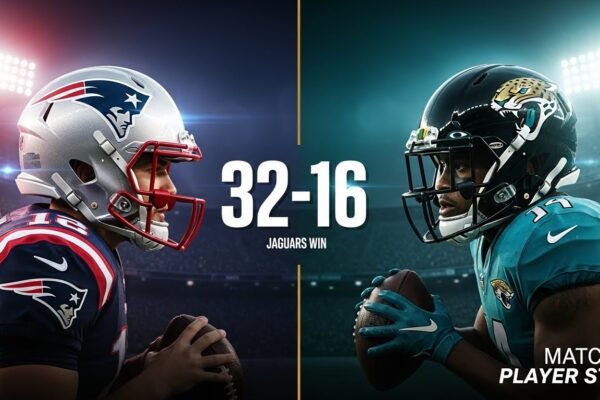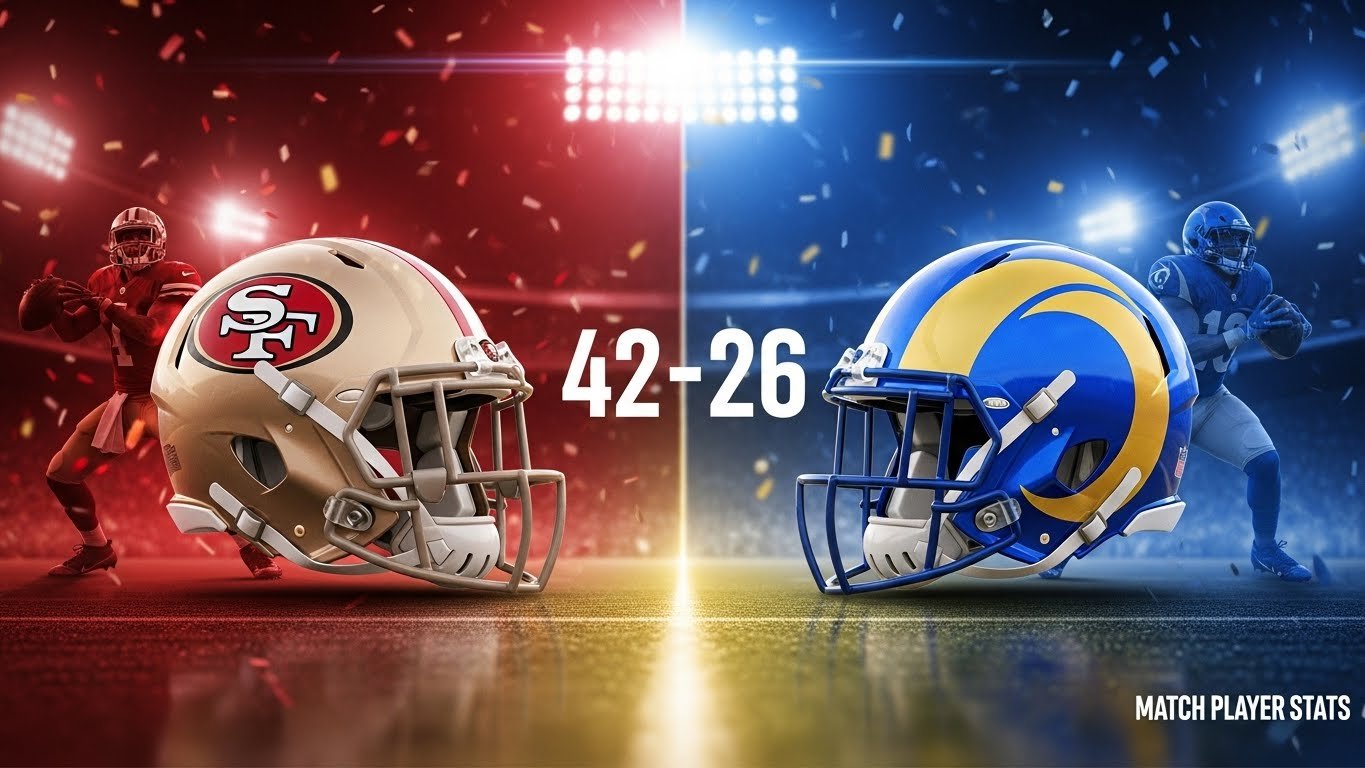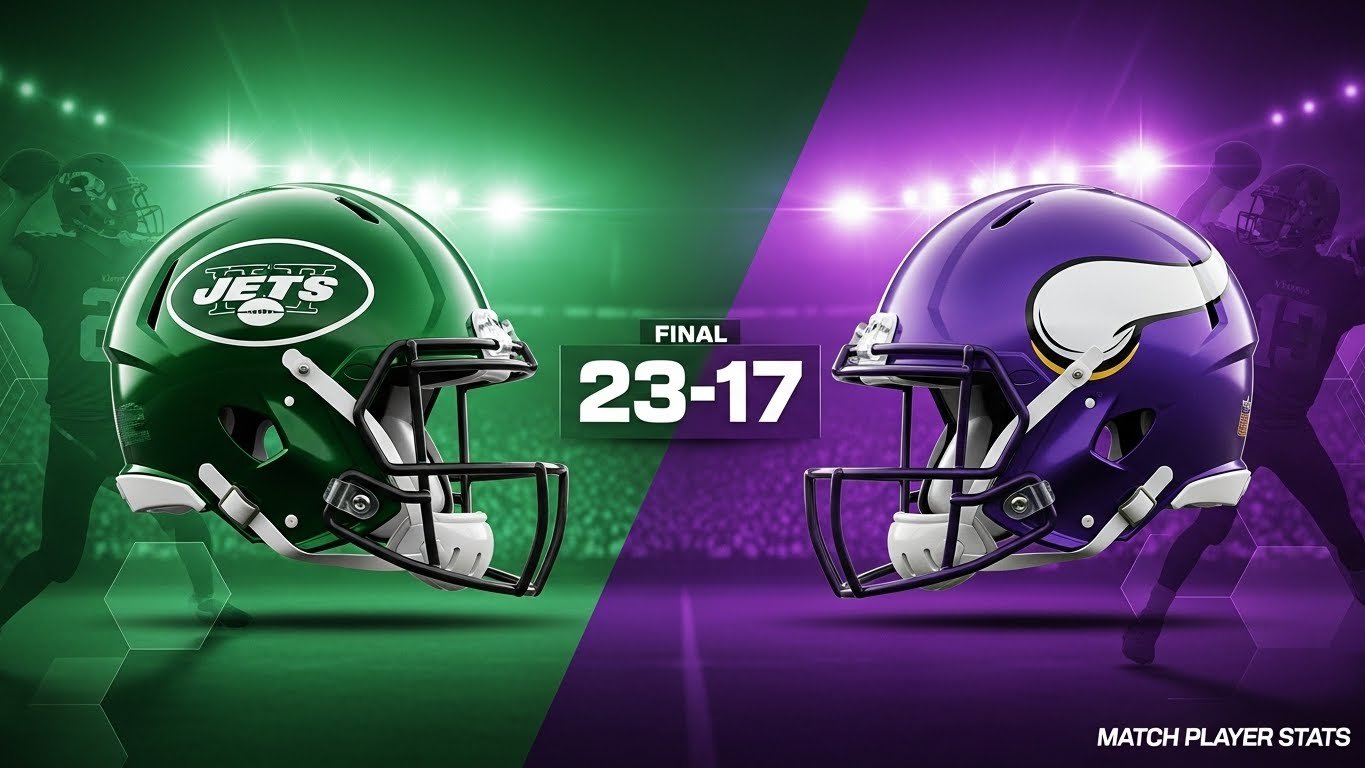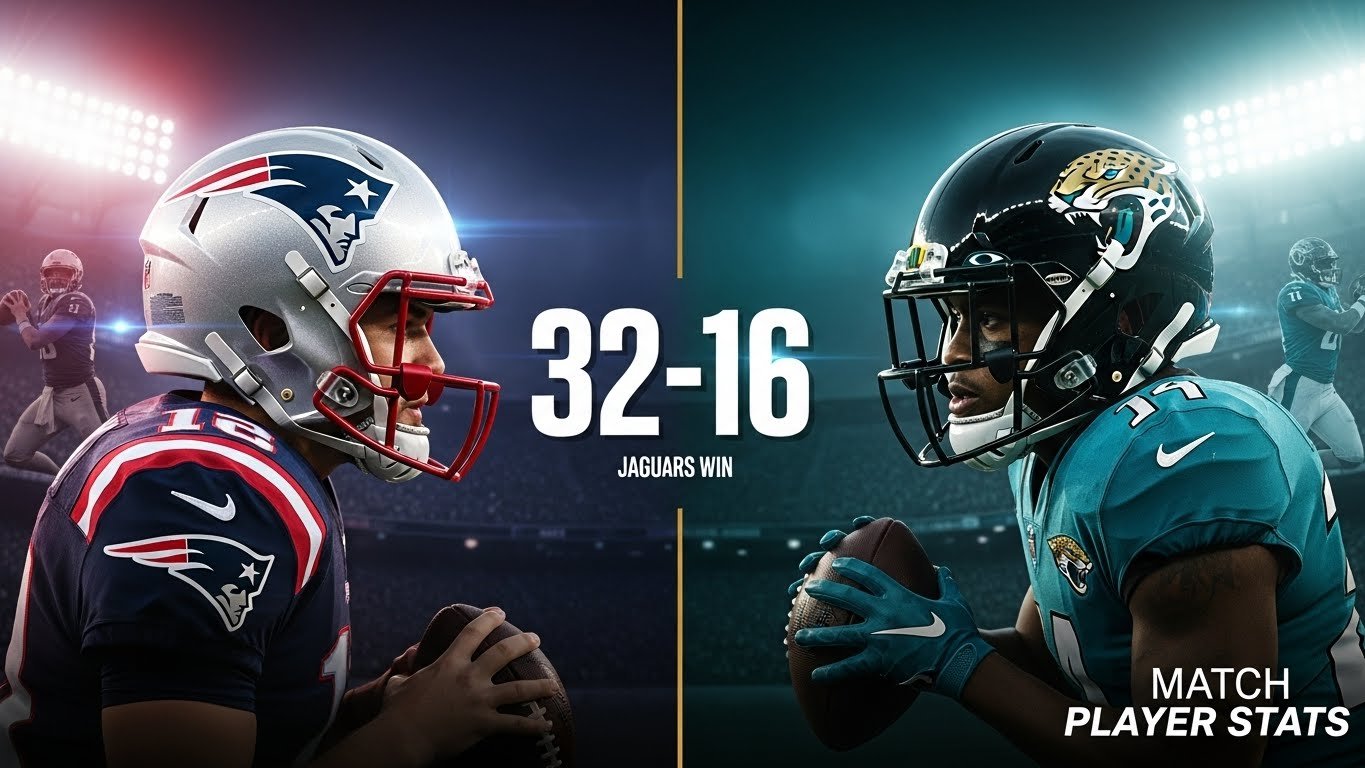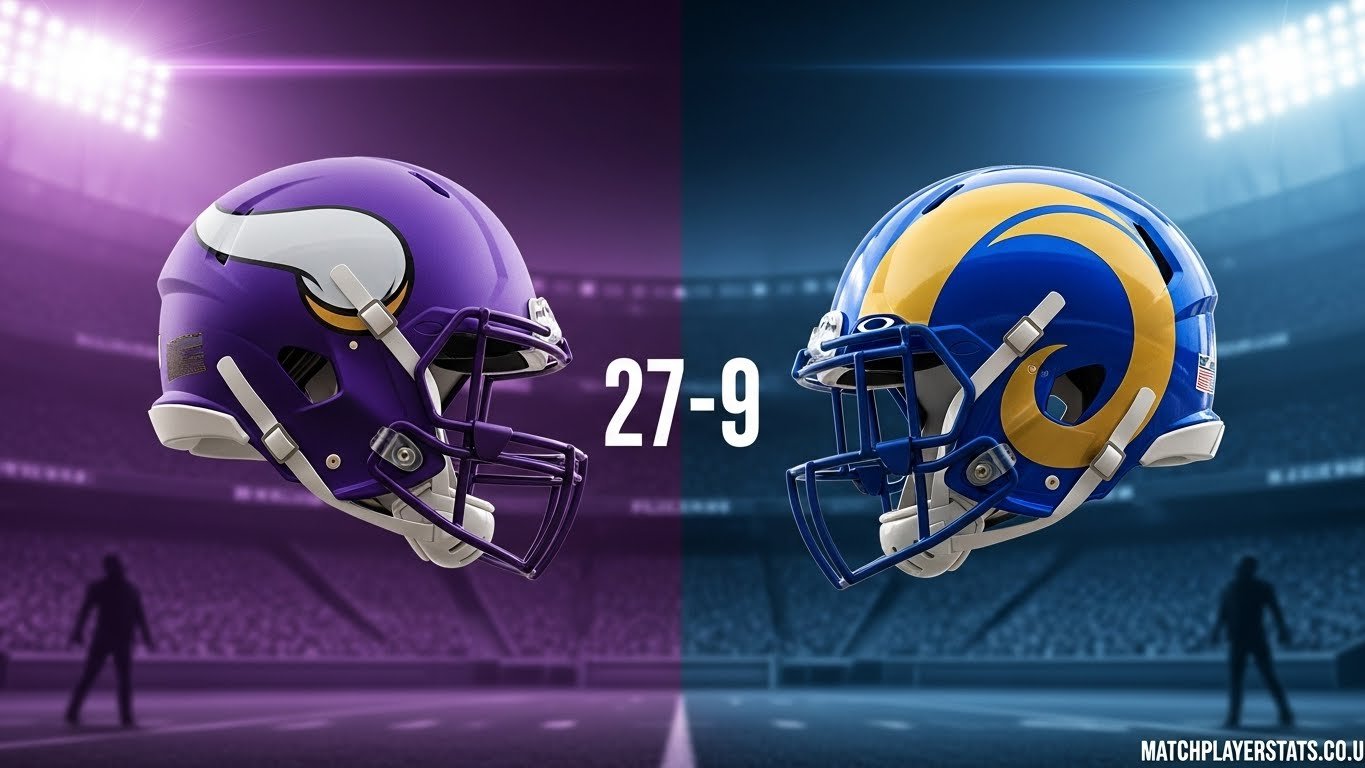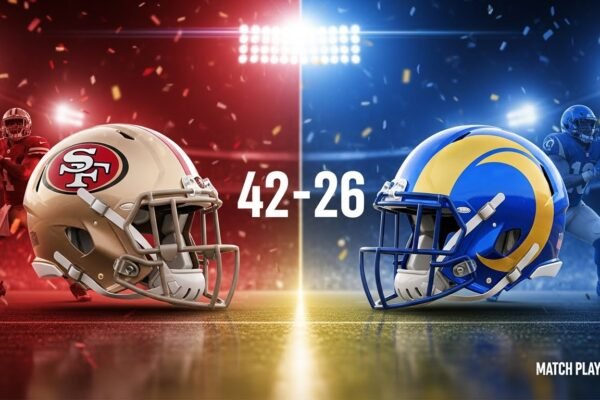

Green Bay Packers vs Philadelphia Eagles Match Player Stats (Jan 12, 2025)
Keisean Nixon caught Jake Elliott’s opening kickoff at Green Bay’s 1-yard line. He made it to the 27 before Oren Burks knocked the ball loose. Jeremiah Trotter Jr. fell on it at the Green Bay 28.
Lincoln Financial Field’s 69,879 fans went from nervous anticipation to deafening roar in three seconds.
Philadelphia needed just three plays to score. Saquon Barkley gained 16 yards on first down, running left behind Lane Johnson. After a one-yard gain, Jalen Hurts found Jahan Dotson crossing over the middle for an 11-yard touchdown. Elliott’s extra point made it 7-0 with 13:21 still showing in the first quarter.
The seventh-seeded Packers never recovered from that 14-second disaster.
Table of Contents
January 12, 2025: Philadelphia 22, Green Bay 10
Green Bay accumulated 302 total yards to Philadelphia’s 290. The Packers earned 17 first downs, Philadelphia 16. Green Bay converted third downs at a 53.8% clip (7 of 13) while the Eagles managed just 18.2% (2 of 11).
Those numbers meant nothing. Green Bay turned the ball over four times. Philadelphia? Zero.
Referee Barry Anderson’s seven-person crew threw 15 total flags. Eight went against Green Bay for 85 yards. Several came at backbreaking moments, including two Tucker Glover holding calls that wiped out gains and a Sean Rhyan hold that erased a 43-yard completion to Malik Heath when Green Bay desperately needed yards.
Jordan Love: 20 Completions, 212 Yards, Three Interceptions
| Statistic | Jordan Love |
|---|---|
| Completions/Attempts | 20/33 |
| Passing Yards | 212 |
| Touchdowns | 0 |
| Interceptions | 3 |
| Passer Rating | 41.5 |
| QBR | 38.1 |
| Sacks Taken | 2 for -17 yards |
| Rushing | 2 carries, 10 yards |
| Deep Ball (10+ yards) | 3/11, 58 yards, 3 INT |
Love’s first mistake came at 14:52 of the second quarter. Green Bay had driven to midfield when Love tried to hit Dontayvion Wicks down the right sideline. Darius Slay jumped the route at Philadelphia’s 22-yard line, securing his 11th career playoff interception.
The second interception hurt worse. With 45 seconds left in the half and Green Bay in Philadelphia territory, Love forced a throw over the middle. Linebacker Zack Baun snagged it and returned it 16 yards to Green Bay’s 45. Philadelphia ran out the clock rather than attempting a late score.
Love’s final interception sealed everything. Trailing 22-10 with under two minutes remaining, he launched a prayer toward the end zone from Philadelphia’s 40-yard line. Quinyon Mitchell, the Eagles’ rookie cornerback, came down with it for a touchback.
Between those turnovers, Love completed short passes efficiently. He hit Tucker Kraft five times for 26 yards. Josh Jacobs caught three for 40. But on passes traveling more than 10 yards through the air, Love went 3-for-11 with all three interceptions.
Jalen Hurts: 13 of 21, Two Touchdowns, Zero Turnovers
| Statistic | Jalen Hurts |
|---|---|
| Completions/Attempts | 13/21 |
| Passing Yards | 131 |
| Touchdowns | 2 |
| Interceptions | 0 |
| Passer Rating | 111.4 |
| QBR | 62.4 |
| Rushing | 6 carries, 36 yards |
| Third Down Passing | 1/6, 8 yards |
| Red Zone Passing | 2/3, 2 TD |
Hurts attempted just 21 passes because Philadelphia never trailed after Nixon’s fumble. His 11-yard touchdown to Dotson came on a quick slant with Dotson beating Carrington Valentine inside.
The second touchdown showcased Dallas Goedert’s physicality. Hurts hit him on a short pass at the Green Bay 20. Goedert caught it, absorbed contact from Valentine, threw multiple stiff-arms, and powered through three defenders into the end zone. The 24-yard score made it 16-3 in the third quarter (Elliott missed the extra point, hitting left upright).
Hurts added crucial rushing yards, including a 15-yard scramble in the first quarter that moved chains on third-and-7. His six carries for 36 yards included several third-down conversions where he tucked and ran when coverage held downfield.
Ground Game: Barkley’s 119 Yards vs Jacobs’ 121 Total Yards
Philadelphia’s Rushing Attack
| Player | Carries | Yards | Average | Long | TD | Targets | Receptions | Receiving Yards |
|---|---|---|---|---|---|---|---|---|
| Saquon Barkley | 25 | 119 | 4.8 | 17 | 0 | 2 | 2 | 4 |
| Jalen Hurts | 6 | 36 | 6.0 | 15 | 0 | – | – | – |
| Kenneth Gainwell | 3 | 14 | 4.7 | 6 | 0 | 0 | 0 | 0 |
| Team Total | 34 | 169 | 5.0 | 17 | 0 | – | – | – |
Barkley earned LFG Player of the Game honors by carrying Philadelphia’s offense when they needed to bleed clock. His 25 carries represented a playoff career high. Seven came in the fourth quarter alone as Philadelphia protected their lead.
His 17-yard run in the first quarter came immediately after Nixon’s fumble, moving Philadelphia to Green Bay’s 12. That set up Dotson’s touchdown two plays later. In the fourth quarter, with Philadelphia clinging to a 16-10 lead, Barkley carried on five of six plays during a drive that ended with Elliott’s 30-yard field goal.
Green Bay’s Running Game
| Player | Carries | Yards | Average | Long | TD | Targets | Receptions | Receiving Yards |
|---|---|---|---|---|---|---|---|---|
| Josh Jacobs | 18 | 81 | 4.5 | 31 | 1 | 3 | 3 | 40 |
| Emanuel Wilson | 3 | 6 | 2.0 | 4 | 0 | 3 | 1 | 23 |
| Tucker Kraft | 2 | 10 | 5.0 | 8 | 0 | 5 | 5 | 26 |
| Jordan Love | 2 | 10 | 5.0 | 11 | 0 | – | – | – |
| Team Total | 25 | 107 | 4.3 | 31 | 1 | – | – | – |
Jacobs finished with 121 total yards from scrimmage, Green Bay’s best individual performance. His 31-yard run came with 7 seconds left in the third quarter, breaking through the left side and racing to Philadelphia’s 1-yard line. On the first play of the fourth quarter, he punched it in from one yard out, cutting the deficit to 16-10.
That sequence represented Green Bay’s high point. The home crowd quieted momentarily as Jacobs celebrated with teammates. But without additional possessions due to turnovers, Jacobs touched the ball just three more times.
Complete Pass Catching Statistics
Eagles Receiving Corps
| Receiver | Targets | Receptions | Yards | Average | Long | Touchdowns | Drops |
|---|---|---|---|---|---|---|---|
| DeVonta Smith | 4 | 4 | 55 | 13.8 | 28 | 0 | 0 |
| Dallas Goedert | 6 | 4 | 47 | 11.8 | 24 | 1 | 0 |
| A.J. Brown | 3 | 1 | 10 | 10.0 | 10 | 0 | 1 |
| Jahan Dotson | 2 | 1 | 11 | 11.0 | 11 | 1 | 0 |
| Grant Calcaterra | 1 | 1 | 4 | 4.0 | 4 | 0 | 0 |
| Saquon Barkley | 2 | 2 | 4 | 2.0 | 3 | 0 | 0 |
Smith’s 28-yard catch in the third quarter came on a deep out pattern against Carrington Valentine. He secured it at Green Bay’s 33, setting up Goedert’s touchdown two plays later. A.J. Brown’s minimal involvement became the game’s most discussed subplot. Television cameras caught him reading a book on the sideline during the third quarter. He remained engaged, celebrating teammates’ plays, but Philadelphia’s game plan didn’t require his services with the defense dominating.
Packers Pass Catchers
| Receiver | Targets | Receptions | Yards | Average | Long | Touchdowns | Drops |
|---|---|---|---|---|---|---|---|
| Tucker Kraft | 5 | 5 | 26 | 5.2 | 12 | 0 | 0 |
| Jayden Reed | 4 | 4 | 46 | 11.5 | 20 | 0 | 0 |
| Josh Jacobs | 3 | 3 | 40 | 13.3 | 15 | 0 | 0 |
| Emanuel Wilson | 3 | 1 | 23 | 23.0 | 23 | 0 | 1 |
| Bo Melton | 3 | 1 | 16 | 16.0 | 16 | 0 | 0 |
| Chris Brooks | 3 | 2 | 9 | 4.5 | 5 | 0 | 0 |
| Romeo Doubs | 2 | 2 | 13 | 6.5 | 7 | 0 | 0 |
| Dontayvion Wicks | 6 | 2 | 39 | 19.5 | 29 | 0 | 2 |
| Malik Heath | 4 | 0 | 0 | 0.0 | 0 | 0 | 1 |
Reed’s shoulder injury in the third quarter forced him to the locker room after catching four passes for 46 yards. His 20-yard reception in the second quarter moved Green Bay to Philadelphia’s 45, setting up McManus’s missed field goal attempt.
Heath’s inability to secure any of his four targets epitomized Green Bay’s offensive frustration. The most critical: a fourth-and-3 incompletion from Green Bay’s 41-yard line with 4:58 remaining. Love had Heath open on a crossing route, but the pass arrived behind him.
Defensive Performances: Four Takeaways vs Zero
Philadelphia’s Defensive Statistics
| Player | Total | Solo | Assists | Sacks | TFL | QB Hits | INT | PD | FF | FR |
|---|---|---|---|---|---|---|---|---|---|---|
| Reed Blankenship | 11 | 7 | 4 | 0 | 0 | 0 | 0 | 0 | 0 | 0 |
| Nolan Smith Jr. | 8 | 4 | 4 | 2 | 2 | 2 | 0 | 0 | 0 | 0 |
| Zack Baun | 8 | 4 | 4 | 0 | 0 | 0 | 1 | 1 | 0 | 0 |
| Quinyon Mitchell | 6 | 6 | 0 | 0 | 0 | 0 | 1 | 1 | 0 | 0 |
| Nakobe Dean | 6 | 3 | 3 | 0 | 2 | 0 | 0 | 0 | 0 | 0 |
| Oren Burks | 5 | 4 | 1 | 0 | 0 | 0 | 0 | 0 | 1 | 0 |
| Cooper DeJean | 4 | 2 | 2 | 0 | 0 | 0 | 0 | 0 | 0 | 0 |
| Darius Slay | 3 | 2 | 1 | 0 | 0 | 0 | 1 | 1 | 0 | 0 |
| Jalen Carter | 2 | 0 | 2 | 0 | 0 | 2 | 0 | 1 | 0 | 0 |
| Jalyx Hunt | 2 | 1 | 1 | 0 | 0 | 0 | 0 | 0 | 0 | 0 |
| Josh Sweat | 1 | 1 | 0 | 0 | 0 | 0 | 0 | 0 | 0 | 0 |
| Jeremiah Trotter Jr. | 0 | 0 | 0 | 0 | 0 | 0 | 0 | 0 | 0 | 1 |
Blankenship’s 11 tackles came all over the field. He stopped Jacobs for a two-yard gain on Green Bay’s first offensive play. He combined with Mitchell to halt Barkley after a four-yard gain in the second quarter. His consistency prevented Green Bay from breaking anything explosive after catches.
Smith’s two sacks both came at crucial moments. His first dropped Love for a 10-yard loss in the first quarter, forcing a Daniel Whelan punt. The second, a seven-yard loss in the third quarter, pushed Green Bay into third-and-19.
Dean left with an injury after recording six tackles, but Philadelphia’s depth absorbed his absence. Burks shifted to middle linebacker, maintaining the defense’s effectiveness. Notably, Burks forced Nixon’s opening fumble that Trotter recovered.
Green Bay’s Defensive Production
| Player | Total | Solo | Assists | Sacks | TFL | QB Hits | INT | PD | FF | FR |
|---|---|---|---|---|---|---|---|---|---|---|
| Quay Walker | 8 | 4 | 4 | 0 | 0 | 0 | 0 | 0 | 0 | 0 |
| Isaiah McDuffie | 8 | 2 | 6 | 0.5 | 0 | 1 | 0 | 0 | 0 | 0 |
| Edgerrin Cooper | 7 | 2 | 5 | 0 | 0 | 1 | 0 | 0 | 0 | 0 |
| Carrington Valentine | 5 | 3 | 2 | 0 | 0 | 0 | 0 | 0 | 0 | 0 |
| Kenny Clark | 5 | 2 | 3 | 0 | 0 | 0 | 0 | 0 | 0 | 0 |
| Xavier McKinney | 5 | 2 | 3 | 0 | 0 | 0 | 0 | 0 | 0 | 0 |
| Kingsley Enagbare | 4 | 2 | 2 | 0 | 0 | 0 | 0 | 0 | 0 | 0 |
| Evan Williams | 4 | 2 | 2 | 0 | 0 | 0 | 0 | 1 | 0 | 0 |
| Lukas Van Ness | 4 | 1 | 3 | 0 | 0 | 0 | 0 | 0 | 0 | 0 |
| Rashan Gary | 3 | 1 | 2 | 1 | 1 | 1 | 0 | 0 | 0 | 0 |
| T.J. Slaton | 3 | 2 | 1 | 0 | 1 | 0 | 0 | 0 | 0 | 0 |
| Javon Bullard | 3 | 2 | 1 | 0 | 0 | 0 | 0 | 0 | 0 | 0 |
| Karl Brooks | 1 | 1 | 0 | 0 | 0 | 0 | 0 | 0 | 0 | 0 |
| Colby Wooden | 2 | 0 | 2 | 0.5 | 0 | 2 | 0 | 0 | 0 | 0 |
Green Bay’s defense performed admirably considering the circumstances. They held Philadelphia to 290 total yards, forced four field goal attempts, and allowed just two offensive touchdowns. Gary’s sack of Hurts for seven yards in the third quarter forced a Braden Mann punt.
But zero takeaways meant zero help for their turnover-prone offense. In playoff football, forcing four field goal attempts means nothing if you can’t match turnovers. Valentine, despite allowing Goedert’s touchdown, played physical coverage most of the game, breaking up two passes and recording five tackles.
Special Teams: Nixon’s Fumble and Elliott’s Reliability
Place Kicking Statistics
| Kicker | FG Made | FG Att | Percentage | 20-29 | 30-39 | 40-49 | 50+ | Long | XP | Points |
|---|---|---|---|---|---|---|---|---|---|---|
| Jake Elliott (PHI) | 3 | 3 | 100% | 0/0 | 3/3 | 0/0 | 0/0 | 32 | 1/2 | 10 |
| Brandon McManus (GB) | 1 | 2 | 50% | 1/1 | 0/1 | 0/0 | 0/0 | 26 | 1/1 | 4 |
Elliott’s three field goals all came from inside 33 yards: 31 yards in the first quarter, 30 yards with 7:33 remaining, and 32 yards with 3:12 left. His missed extra point hit the left upright after Goedert’s touchdown, keeping the score 16-3 instead of 17-3.
McManus connected from 26 yards in the third quarter but pushed a 38-yarder wide right in the second quarter. That miss at the 5:05 mark kept Philadelphia’s halftime lead at 10-0. Green Bay had driven 37 yards in 13 plays, consuming 7:37, only to come away empty.
Punting and Field Position Battle
| Punter | Punts | Yards | Gross Avg | Net Avg | Inside 20 | Touchbacks | Long | Returns Against |
|---|---|---|---|---|---|---|---|---|
| Braden Mann (PHI) | 5 | 243 | 48.6 | 44.4 | 2 | 1 | 63 | 2 for 26 yards |
| Daniel Whelan (GB) | 2 | 100 | 50.0 | 39.0 | 0 | 0 | 50 | 2 for 11 yards |
Mann’s 63-yard bomb in the third quarter traveled from Philadelphia’s 27 to Green Bay’s 10, where Reed fair caught it. The punt came after Gary’s sack disrupted a Philadelphia drive. Mann also dropped punts at the Green Bay 23 and 20-yard lines.
Whelan punted just twice, reflecting Green Bay’s ability to move the ball before turnovers ended drives. His 50-yarder in the first quarter went out of bounds at Philadelphia’s 35 after DeJean couldn’t field it cleanly.
Return Game Impact
| Player | Team | KO Returns | KO Yards | KO Avg | KO Long | PR | PR Yards | PR Avg | PR Long |
|---|---|---|---|---|---|---|---|---|---|
| Keisean Nixon | GB | 4 | 95 | 23.8 | 28 | 0 | 0 | – | – |
| Isaiah Rodgers | PHI | 2 | 57 | 28.5 | 32 | 0 | 0 | – | – |
| Jayden Reed | GB | 0 | 0 | – | – | 2 | 26 | 13.0 | 20 |
| Cooper DeJean | PHI | 0 | 0 | – | – | 2 | 11 | 5.5 | 11 |
Nixon’s fumble overshadowed his subsequent returns. After the opening disaster, he returned three more kickoffs for 67 yards, including a 28-yarder in the first quarter that reached Green Bay’s 30. He also fumbled but recovered his own bobble on a third-quarter return.
Reed’s 20-yard punt return in the second quarter gave Green Bay excellent field position at their own 43. They drove to Philadelphia’s 20 before McManus missed his field goal attempt.
How Each Quarter Unfolded
First Quarter: Philadelphia 10, Green Bay 0
14:53 – Nixon fumbles opening kickoff, Trotter recovers at GB 28 14:07 – Barkley gains 16 yards on first down 13:21 – Hurts to Dotson, 11-yard touchdown (Elliott XP good)
Green Bay’s first drive: three-and-out after Love’s incompletion to Wicks on third-and-8.
Philadelphia added Elliott’s 31-yard field goal at 0:19 after an 11-play, 57-yard drive that consumed exactly 5:00. The drive featured Hurts’ 15-yard scramble and Smith’s 10-yard reception.
Second Quarter: No Scoring
Both teams squandered opportunities. Love threw his first interception to Slay at 14:52. McManus missed from 38 yards at 5:05 after Green Bay’s best drive of the half. Baun’s interception with 45 seconds left came when Love tried to force a ball to Heath in traffic.
Philadelphia received the ball at Green Bay’s 44 after Baun’s return but ran three plays before Mann punted. The Eagles seemed content taking a 10-0 lead into halftime.
Third Quarter: Philadelphia 16, Green Bay 3
McManus finally got Green Bay on the board with a 26-yard field goal at 5:46, capping a 12-play, 76-yard drive. The key play: Wicks’ 29-yard reception on a deep crossing route against Mitchell.
Philadelphia responded immediately. Smith’s 28-yard catch put them in scoring position. Two plays later, Goedert caught his 24-yard touchdown, breaking through multiple tackle attempts. Elliott’s extra point hit the upright (16-3).
Jacobs’ 31-yard run with seven seconds left set up Green Bay at the 1-yard line.
Fourth Quarter: Philadelphia 22, Green Bay 10
14:56 – Jacobs 1-yard touchdown run (McManus XP good)
The crowd quieted momentarily. Green Bay had life at 16-10.
Philadelphia responded with two time-consuming drives. Elliott connected from 30 yards at 7:33 after a 13-play, 58-yard march. His 32-yarder at 3:12 came after T.J. Slaton’s unnecessary roughness penalty gave Philadelphia 15 yards and a first down.
Mitchell’s end zone interception at 1:51 ended Green Bay’s final threat.
Critical Penalties That Shaped the Game
Green Bay’s Eight Penalties (85 yards)
First Quarter:
- J. FitzPatrick, offensive holding, 10 yards (negated good return)
Second Quarter:
- T. Glover, offensive holding, 10 yards (twice) – pushed GB back from PHI 17 to 22, later from GB 28 to 18
- T. Glover, ineligible downfield pass, 5 yards – negated pass to Doubs
Third Quarter:
- K. Telfort, offensive holding, 10 yards – negated pass to Doubs at PHI 23
Fourth Quarter:
- S. Rhyan, offensive holding, 10 yards – erased 43-yard completion to Heath
- T. Slaton, unnecessary roughness, 15 yards – gave PHI first down at GB 20
Philadelphia’s Seven Penalties (64 yards)
Less damaging overall. Smith’s illegal motion and offensive holding came during sustained drives. Lane Johnson’s holding pushed them back but didn’t prevent scoring. Goedert’s false start on fourth down added five yards to a punt.
Red Zone Efficiency: Both Teams Struggled
| Team | Red Zone Trips | Touchdowns | Field Goals | Turnovers | Failed | Success Rate |
|---|---|---|---|---|---|---|
| Green Bay | 3 | 1 (Jacobs) | 1 | 0 | 1 | 33.3% |
| Philadelphia | 4 | 1 (Goedert) | 3 | 0 | 0 | 25.0% |
Neither team excelled inside the 20. Green Bay’s third red zone trip ended when Love threw incomplete to Melton on third-and-goal from the 8. Philadelphia settled for Elliott’s field goals three times but never turned the ball over in scoring position.
Drive Summary and Possession Statistics
| Team | Total Drives | Scoring Drives | Turnovers | Punts | Downs | Time of Possession |
|---|---|---|---|---|---|---|
| Green Bay | 11 | 2 | 4 | 2 | 1 | 29:27 |
| Philadelphia | 11 | 5 | 0 | 5 | 0 | 30:33 |
Green Bay’s 11 drives: two scores, four turnovers, two punts, one turnover on downs, one missed field goal, one end of half.
Philadelphia’s 11 drives: five scores, five punts, one end of half. They never turned the ball over or failed on fourth down.
Third and Fourth Down Conversions Tell Different Stories
| Down | Green Bay | Philadelphia |
|---|---|---|
| Third Down Conversions | 7/13 (53.8%) | 2/11 (18.2%) |
| Fourth Down Conversions | 1/2 (50%) | 1/1 (100%) |
Green Bay’s third-down success rate typically wins games. They converted over half their attempts, including a Love-to-Jacobs completion on third-and-2 for 11 yards and a Kraft reception on third-and-2 for 10 yards.
Philadelphia struggled on third down but didn’t need to convert many. Their lone fourth-down attempt succeeded when Hurts pushed forward for three yards at midfield in the fourth quarter.
Green Bay failed on fourth-and-3 from their own 41 when Love’s pass to Heath arrived behind the receiver with 4:58 remaining.
Individual Notes and Injury Report
Jayden Reed left for the locker room in the third quarter after his shoulder injury. Before exiting, he’d been Green Bay’s most reliable target with four catches on four targets for 46 yards.
Nakobe Dean departed after recording six tackles and two tackles for loss. Oren Burks moved to middle linebacker, maintaining Philadelphia’s defensive structure.
C.J. Gardner-Johnson briefly left but returned to play in the fourth quarter.
A.J. Brown’s book became the game’s most viral moment. The book remained in his hands during multiple third-quarter television shots. Brown stayed engaged, celebrating teammates’ successes, but caught just one pass as Philadelphia’s defense and running game dominated.
Romeo Doubs drew a costly offensive holding penalty that negated a potential first down. He finished with just two catches for 13 yards.
Playoff Turnover Statistics
In the last 10 seasons of playoff football, teams with a plus-4 or better turnover differential are 47-2. Philadelphia joins elite playoff defenses that advance through takeaways rather than yards allowed.
Final Statistics and What They Mean
Green Bay outgained Philadelphia 302-290. They had more first downs (17-16). They converted third downs at a 53.8% rate compared to Philadelphia’s 18.2%. They ran 60 plays to Philadelphia’s 57.
None of it mattered.
Four turnovers to zero decided this game. Nixon’s opening fumble gave Philadelphia immediate momentum and a 7-0 lead. Love’s three interceptions prevented Green Bay from capitalizing on their statistical advantages. Eight penalties for 85 yards, including holds that erased big gains, compounded their self-inflicted wounds.
Josh Jacobs fought valiantly with 121 total yards and Green Bay’s lone touchdown. The defense held Philadelphia to two offensive touchdowns and forced four field goal attempts. Quay Walker and Isaiah McDuffie each made eight tackles. Rashan Gary recorded the team’s only sack.
But without forcing turnovers themselves, Green Bay’s defense couldn’t bail out their offense.
Saquon Barkley’s 119 rushing yards gave Philadelphia the ability to drain clock when ahead. His 25 carries wore down Green Bay’s defense throughout the game. Hurts threw just 21 passes but connected for two touchdowns without throwing an interception. When Philadelphia needed points, Elliott delivered three field goals.
The Eagles advance to the NFC Divisional Round. They’ll host their next playoff game at Lincoln Financial Field, where 69,879 fans watched them demonstrate that playoff football rewards ball security above all else.
For Green Bay, a season that began with playoff hopes ends with a lesson: In January, protecting the football matters more than moving it.
Sources: FOX Sports Game Coverage, USA Today Sports Data, The Score Game Summary



